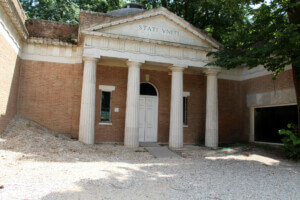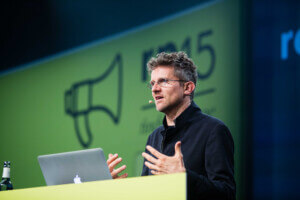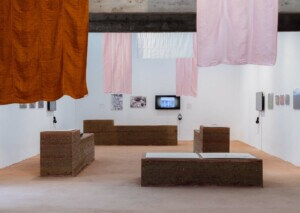At the 2014 Venice Architecture Biennale, Rem Koolhaas set the theme “Absorbing Modernity: 1914-2014” for the national pavilions, and many countries took it up through the lens of domesticity. The Taiwanese American designer Jimenez Lai examined the spaces and rituals of Taiwanese life with his exhibition Township of Domestic Parts. Lai created “superfurniture,” overscaled, Memphis-inflected installations that interpreted ideas such as museum-like living rooms—part shrine, part show place, reserved only for guests. The result is a fantasy hangout space, which conjures up memories of childhood.
Inside the neoclassical German Pavilion, the organizers built a modern house. The two structures intersect and “absorb” one another—a sofa is split by a wall, an outdoor fireplace undercuts the monumentality of the pavilion’s central atrium. The pavilion turns amusing and strange—the kitchen is entirely formed by a glass wall and resembles a scientific lab—the installation is one of the best-crafted of the Biennale, though its meaning is largely opaque.
The French Pavilion skewered Modernism as it met the realities of modernity. The central portion included a model of the house at the center of Jacques Tati’s film Mon Oncle. The gallery behind includes a beautiful collection of prefabricated panels designed by Jean Prové, but also includes videos that detail the failure commercial failure of prefabricated architecture. The exhibition takes a decidedly sinister tone in the side gallery, which looks at an unsuccessful modernist housing development outside Paris, which was later used as an internment camp for French jews during the Holocaust.
By asking the national participants to consider “Modernity” as a condition rather than “Modernism” as a style, Koolhaas has provided a useful framework for examining 20th century architecture in the culture of the 20th century. But few seemed prepared to engage with the state of architecture and culture today.










